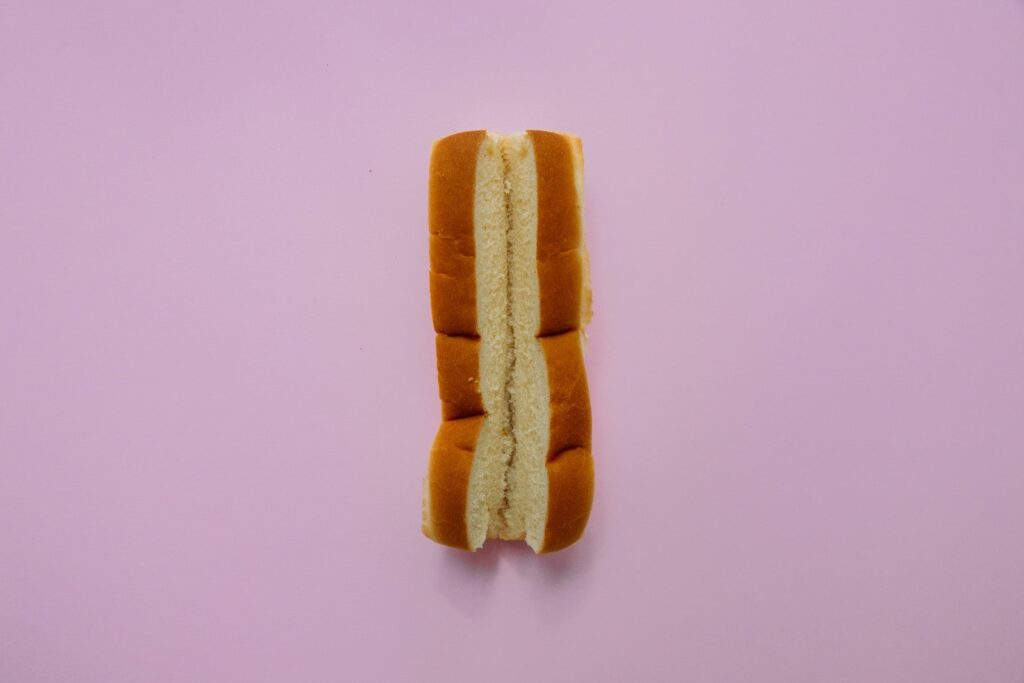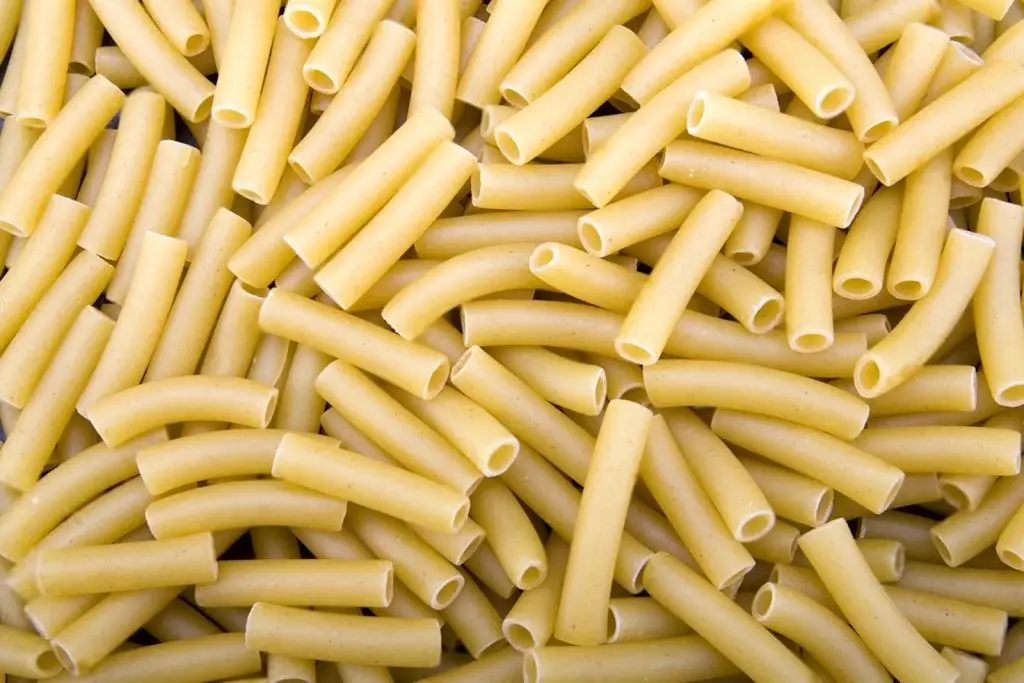
Cornbread dressing, also known as cornbread stuffing, is a beloved dish often enjoyed during holiday feasts and special gatherings. Made with a combination of crumbled cornbread, aromatic vegetables, herbs, and spices, this savory side dish is a perfect complement to roasted meats or poultry. While it’s typically prepared fresh for immediate consumption, freezing cornbread dressing can be a convenient option for those who want to plan ahead or have leftovers they wish to preserve.
Here are the steps for freezing cornbread dressing:
Step 1: Prepare and cool the cornbread dressing
Allowing the cornbread dressing to cool completely at room temperature before freezing is important for preserving its texture and preventing it from becoming soggy. Here’s why:
- Moisture distribution: During the baking process, moisture is released from the ingredients and evaporates, creating steam. This steam contributes to the moisture content of the dressing. Allowing the dressing to cool at room temperature helps distribute the remaining moisture evenly throughout the dish.
- Texture retention: When the dressing is hot, its internal structure is still fragile and easily disturbed. If you were to freeze it immediately after baking while it’s still hot, the trapped steam would turn into ice crystals, which can rupture the delicate structure of the dressing. This can result in a mushy or soggy texture once thawed.
- Condensation prevention: Placing hot or warm food directly in the freezer can lead to the formation of condensation. Condensation occurs when the warm air inside the container comes into contact with the cold air in the freezer, causing moisture droplets to form. This excess moisture can negatively affect the texture of the dressing when thawed, making it soggy.
Step 2: Portion the cornbread dressing
Portioning the cornbread dressing before freezing offers several benefits, including ease of thawing and serving. Here’s why it’s recommended:
- Convenient serving sizes: By portioning the cornbread dressing before freezing, you can determine the serving sizes that best suit your needs. This makes it easier to defrost and serve the exact amount required for each occasion, whether it’s a small family meal or a larger gathering. It eliminates the need to thaw the entire dish if you only need a portion, reducing waste and ensuring efficient meal planning.
- Faster thawing: Smaller portions of cornbread dressing will thaw more quickly compared to a whole dish. The thawing time depends on the thickness and size of the frozen item, and smaller portions have a greater surface area exposed to the thawing process. This means that individual portions of the dressing will thaw faster and more evenly, allowing you to reheat and serve them in a shorter amount of time.
- Customizable reheating: Portioning the cornbread dressing into individual servings provides flexibility in reheating. You can thaw and heat only the required portions, avoiding overcooking or drying out the entire dish. It allows you to retain the optimal texture and flavor of the dressing, ensuring a satisfying meal with each serving.
- Reduced waste: Freezing the cornbread dressing as a whole without portioning may lead to leftovers that could potentially go to waste. By cutting the dressing into individual portions, you have better control over the quantity you freeze and serve. This helps minimize food waste and allows you to enjoy the dressing over multiple meals without any leftovers spoiling.
Step 3: Wrap the cornbread dressing
Wrapping the cornbread dressing tightly in plastic wrap before freezing is an essential step to protect it from freezer burn and maintain its moisture. Here’s why this step is important:
- Protection against freezer burn: Freezer burn occurs when the moisture within the food evaporates and forms ice crystals on its surface. These ice crystals can dehydrate the food, resulting in a dry and tough texture. By tightly wrapping the cornbread dressing in plastic wrap, you create a barrier that helps prevent the exposure of the dressing to the cold, dry air in the freezer. This minimizes the chances of freezer burn and helps preserve the dressing’s quality.
- Maintaining moisture: The plastic wrap acts as a seal, preventing moisture loss from the dressing during freezing. Moisture loss can lead to the drying out of the cornbread, making it less appetizing and affecting its texture. By tightly wrapping the dressing, you help retain the moisture within, ensuring that it stays moist and flavorful when it’s eventually thawed and reheated.
- Preventing odors and cross-contamination: Plastic wrap also helps to prevent the absorption of odors from other foods in the freezer. It creates a protective barrier that keeps the dressing isolated and maintains its original taste and aroma. Additionally, the plastic wrap provides a hygienic layer that minimizes the risk of cross-contamination between the cornbread dressing and other frozen items in the freezer.
To ensure effective wrapping, make sure to wrap each portion or the entire cornbread dressing tightly, eliminating any gaps or exposed areas. This will provide an extra layer of protection and help maintain the dressing’s quality and flavor while it’s frozen.
Step 4: Double-wrap with aluminum foil
Double-wrapping the cornbread dressing with aluminum foil after the initial plastic wrap provides additional insulation and protection during freezing. Here’s why this step is beneficial:
- Enhanced insulation: Aluminum foil is an effective barrier against air and moisture. By double-wrapping the cornbread dressing with foil, you create an extra layer of insulation that helps further minimize the risk of freezer burn. This is particularly important for longer-term storage, as it provides an additional shield against the cold, dry air in the freezer, which can potentially affect the dressing’s quality and texture.
- Improved moisture retention: The aluminum foil helps to retain the moisture within the cornbread dressing by acting as a moisture barrier. This helps to prevent the dressing from drying out during freezing, preserving its moisture content and overall texture. By maintaining the appropriate moisture levels, the dressing remains moist and flavorful when thawed and reheated.
- Protection against odors and flavors: Aluminum foil is also effective at preventing the absorption of odors and flavors from other foods in the freezer. It adds an extra layer of defense, keeping the cornbread dressing isolated and maintaining its original taste and aroma. This is particularly beneficial when storing the dressing for an extended period, as it helps preserve its intended flavors.
- Added durability: Aluminum foil provides an extra layer of protection to the dressing, making it more resistant to potential punctures or tears. This can help prevent any damage to the plastic wrap and maintain the integrity of the dressing during storage and handling in the freezer.
Can I freeze cornbread dressing in a glass baking dish?
Yes, you can freeze cornbread dressing in a glass baking dish. Glass is generally a safe and suitable material for freezing. However, to prevent potential cracking or damage to the dish, it’s recommended to first cool the cornbread dressing completely, then cover the glass dish tightly with plastic wrap or aluminum foil before placing it in the freezer. Once the cornbread dressing is frozen solid, you can transfer the dish to a more efficient storage container if desired.
Step 5: Label and date the packages
Labeling and dating the wrapped packages of frozen cornbread dressing is crucial for efficient organization and proper food management. Here’s why this step is important:
- Easy identification: By labeling each package, you can easily identify the contents without having to unwrap or guess. This saves time and prevents any confusion when you need to locate and retrieve a specific portion of cornbread dressing from the freezer. Clear labeling ensures that you can quickly find what you’re looking for, especially if you have multiple types of frozen foods stored.
- Tracking storage time: Writing the date of freezing on each package helps you keep track of how long the cornbread dressing has been in the freezer. Different foods have recommended storage times, and by labeling the packages, you can ensure that you use the cornbread dressing within the appropriate time frame. This helps maintain the best quality and flavor of the dressing.
- Preventing food waste: Knowing the freezing date allows you to monitor the shelf life of the cornbread dressing accurately. If the storage time is approaching the recommended limit, it serves as a reminder to use the dressing before it loses its quality. This helps prevent unnecessary food waste by ensuring that the frozen cornbread dressing is consumed in a timely manner.
- Rotation and inventory management: Labeling and dating the packages enable you to practice proper rotation of frozen foods. By placing newer packages behind older ones, you ensure that the older cornbread dressing is used first, reducing the chances of food spoilage or freezer burn. It also helps with inventory management, allowing you to keep track of the quantity and variety of frozen items you have on hand.
Overall, labeling and dating the packages of frozen cornbread dressing provide organization, and clear identification, and help you manage the storage time and inventory effectively. By following these practices, you can ensure that the cornbread dressing is used at its best quality and minimize the risk of waste.
Step 6: Freeze the wrapped cornbread dressing
Freezing the wrapped cornbread dressing packages in a single layer initially before stacking or organizing them in the freezer offers several benefits. Here’s why this step is important:
- Faster and more even freezing: Placing the wrapped cornbread dressing packages in a single layer initially allows for faster and more even freezing. When the packages are spread out in a single layer, the cold air in the freezer can circulate around them more efficiently. This helps to lower the temperature of the dressing more quickly and ensures that it freezes uniformly throughout. Faster and even freezing helps to preserve the texture, flavor, and quality of the cornbread dressing.
- Reduced risk of partial thawing: When the cornbread dressing is first placed in the freezer, there may still be residual warmth from the cooking process. By arranging the wrapped packages in a single layer, the surrounding cold air can rapidly bring down the temperature of the dressing, minimizing the risk of partial thawing. Partial thawing can lead to the growth of bacteria and the loss of texture and taste in the dressing.
- Ease of stacking and organization: Once the cornbread dressing packages are frozen solid, they can be stacked or organized more efficiently in the freezer. Freezing them in a single layer initially prevents the packages from sticking together or becoming misshapen during freezing. Stacking the frozen packages saves space in the freezer and allows for better organization, making it easier to locate and access the cornbread dressing when needed.
It’s important to note that while stacking the frozen cornbread dressing packages is permissible, try to avoid over-packing or placing excessive weight on top of the packages to prevent any damage. Additionally, ensure that the packages are well-sealed and protected to maintain the quality of the dressing during storage.
What is the ideal temperature when freezing cornbread dressing?
The ideal temperature for freezing cornbread dressing is 0°F (-18°C) or below. This low temperature ensures that the dressing freezes quickly and maintains its quality during storage. Freezing at this temperature prevents the growth of bacteria and enzymatic activity, preserving the texture, flavor, and overall integrity of the cornbread dressing.
Other related questions
How do I defrost frozen cornbread dressing?
To defrost frozen cornbread dressing, there are a few options. The recommended method is to transfer the wrapped package(s) from the freezer to the refrigerator and allow them to thaw slowly overnight or for about 24 hours. This gradual thawing helps maintain the texture and flavor of the dressing. Alternatively, you can use the defrost setting on your microwave, but be cautious as it may affect the texture. Once thawed, reheat the cornbread dressing in the oven or microwave until it reaches the desired serving temperature.
How long can I freeze cornbread dressing?
You can freeze cornbread dressing for up to 3 months without significant loss in quality. However, for the best flavor and texture, it is recommended to consume the frozen cornbread dressing within 1 to 2 months. Freezing for longer periods may result in a decline in taste and texture. Be sure to label and date the packages, and use them within the recommended time frame to enjoy the cornbread dressing at its best.
Can I freeze previously thawed cornbread dressing?
It is generally not recommended to refreeze previously thawed cornbread dressing. Each time you freeze and thaw the dressing, its texture and quality may deteriorate. Additionally, repeated freezing and thawing can increase the risk of bacterial growth and foodborne illness. To minimize waste, it’s best to portion the cornbread dressing appropriately before freezing, so you can thaw and use only the amount you need at a given time.
How do I know if my frozen cornbread dressing has gone bad?
There are a few indicators to determine if frozen cornbread dressing has gone bad. Firstly, check for any signs of freezer burn, such as discolored or dry patches on the surface. If the dressing has an off or rancid smell, it is likely spoiled. Additionally, if there are any visible signs of mold growth, it should be discarded. Lastly, if the texture or taste is significantly altered, or if there are any signs of spoilage like an unusual slimy or mushy consistency, it is best to err on the side of caution and discard the cornbread dressing.
Can I use frozen cornbread dressing with the fresh ones?
It is generally recommended to separate and use frozen cornbread dressing separately from fresh ones. Mixing frozen and fresh cornbread dressing can result in uneven cooking and inconsistent texture. The frozen dressing may release additional moisture when combined with fresh dressing, affecting the overall moisture content and texture of the dish. To maintain the best quality and ensure even cooking, it’s best to thaw and use frozen cornbread dressing separately, on its own, or in combination with other frozen components.
Can I freeze cornbread dressing that has already been cooked?
Yes, you can freeze cornbread dressing that has already been cooked. Freezing cooked cornbread dressing is a great way to preserve it for future use. Make sure to cool the dressing completely before wrapping it tightly in plastic wrap and aluminum foil to maintain its texture and flavor during freezing.
Can I freeze cornbread dressing with added meat or vegetables?
Yes, you can freeze cornbread dressing with added meat or vegetables. However, it’s important to ensure that the meat and vegetables are cooked thoroughly before incorporating them into the dressing. This helps maintain their quality and ensures food safety during freezing and thawing. Additionally, be mindful of any specific freezing recommendations for the types of meat or vegetables used in the dressing.
Can I freeze cornbread dressing in individual servings?
Yes, you can freeze cornbread dressing in individual servings. Freezing cornbread dressing in individual portions allows for convenient thawing and serving later. It also helps with portion control and reduces the need to thaw and reheat more than what is necessary at a given time.
Can I freeze cornbread dressing made with gluten-free ingredients?
Yes, you can freeze cornbread dressing made with gluten-free ingredients. Gluten-free cornbread dressing can be safely frozen using the same techniques as regular cornbread dressing. Just make sure the dressing is fully cooled before wrapping and freezing it to maintain its texture and flavor. When ready to enjoy, thaw and reheat the gluten-free cornbread dressing following the same instructions as for regular cornbread dressing.
Can I freeze cornbread dressing that has been stuffed inside a turkey?
It is not recommended to freeze cornbread dressing that has been stuffed inside a turkey. The reason is that the moisture and juices from the turkey can affect the texture and quality of the dressing during freezing and thawing. Additionally, there may be food safety concerns as the turkey cavity can create an environment conducive to bacterial growth. It’s best to separate the cornbread dressing from the turkey before freezing it for optimal results.
How long does it take for frozen cornbread dressing to thaw in the refrigerator?
The thawing time for frozen cornbread dressing in the refrigerator can vary depending on the size and thickness of the portions. Generally, it takes about 24 to 48 hours for frozen cornbread dressing to thaw completely in the refrigerator. It’s important to plan ahead and allow enough time for gradual thawing to ensure even and safe thawing of the dressing.
Can I freeze cornbread dressing that contains eggs?
Yes, you can freeze cornbread dressing that contains eggs. Eggs in cornbread dressing are typically cooked during the baking process, which helps stabilize them for freezing. When freezing, ensure that the cornbread dressing is fully cooled before wrapping and freezing it to maintain its quality. Thaw and reheat the frozen cornbread dressing following the recommended thawing and reheating instructions for best results.
Can I freeze cornbread dressing that has been topped with gravy or sauce?
It is generally not recommended to freeze cornbread dressing that has been topped with gravy or sauce. Freezing can alter the texture and consistency of the gravy or sauce, resulting in a less desirable texture when thawed and reheated. It’s best to freeze the cornbread dressing separately from the gravy or sauce and add them together after reheating for optimal taste and texture.








